#Intensive care medicine
Explore tagged Tumblr posts
Text
PG Diploma in Intensive Care Medicine

Intensive Care Medicine is a vital and highly specialized field in healthcare, focused on treating patients with life-threatening illnesses and injuries. A Postgraduate (PG) Diploma in Intensive Care Medicine is designed for healthcare professionals who want to deepen their expertise in managing critically ill patients and contribute to this essential field of medicine.
What is a PG Diploma in Intensive Care Medicine?
A PG Diploma in Intensive Care Medicine provides advanced education and hands-on training in intensive care. This diploma focuses on equipping healthcare professionals with the necessary skills to manage complex cases in intensive care settings. Unlike a master’s degree, which may include broader healthcare management topics, a PG diploma often emphasizes practical and clinically focused training specific to intensive care.
Who Should Pursue a PG Diploma in Intensive Care Medicine?
The PG Diploma in Intensive Care Medicine is ideal for individuals with a background in healthcare, such as:
Medical doctors
Nurses with critical care experience
Paramedics interested in advanced critical care
This program is typically open to those with prior qualifications in healthcare and some hands-on experience in clinical settings.
Core Curriculum and Learning Objectives
The curriculum for a PG Diploma in Intensive Care Medicine is intensive and covers a wide range of essential topics. Core subjects include:
Anatomy and Physiology of Critical Illness
Management of Respiratory Failure and Mechanical Ventilation
Sepsis and Infection Control
Emergency Cardiac Care and Hemodynamics
Nutrition and Renal Support in Critical Care
The goal is to develop competency in diagnosing and managing critical conditions, making swift decisions, and effectively utilizing critical care resources.
Specialized Topics in Intensive Care
Alongside core subjects, the curriculum often includes specialized topics that address emerging trends and advanced techniques in critical care, such as:
Telemedicine in ICU
Neurological Critical Care
Pediatric and Neonatal Intensive Care
Extracorporeal Membrane Oxygenation (ECMO)
These advanced topics prepare healthcare professionals for the complexities they may encounter in modern intensive care units (ICUs).
Clinical Training and Hands-on Experience
Practical training is a cornerstone of the PG Diploma in Intensive Care Medicine. Through clinical rotations and simulations, students gain exposure to real-world ICU scenarios, developing hands-on experience in patient monitoring, emergency response, and equipment handling. This practical exposure ensures they can apply theoretical knowledge to real-life situations effectively.
Duration and Format of the Program
Typically, a PG Diploma in Intensive Care Medicine spans between 6 months to 1 year, depending on the institution and format. Many programs offer flexible options:
Full-time for faster completion
Part-time for working professionals
Online courses for remote learning
This flexibility makes it accessible to a broader range of students.
Key Benefits of a PG Diploma in Intensive Care Medicine
Specialized Skills – Provides in-depth training specific to intensive care.
Career Advancement – Opens pathways to higher roles in ICU management.
Increased Employability – High demand for professionals with intensive care expertise.
Confidence in Critical Care – Enhances your ability to handle high-pressure situations.
Career Opportunities After Completing the Diploma
With a PG Diploma in Intensive Care Medicine, professionals can pursue roles like:
Intensive Care Specialist
ICU Nurse
Emergency Response Coordinator
Critical Care Paramedic
Clinical Research Associate in ICU settings
These positions are available in hospitals, trauma centers, and specialized care facilities worldwide.
Job Outlook and Salary Expectations
Intensive care professionals are in demand across the globe. Salaries vary depending on location and experience, but PG diploma holders can expect an average salary ranging from $50,000 to $120,000 annually depending on their specific role, region, and level of experience.
Top Institutions Offering PG Diploma in Intensive Care Medicine
Leading institutions worldwide offer this specialized diploma. Some notable options include:
University of Edinburgh – Online PG Diploma in Intensive Care Medicine
Monash University – Australia-based intensive care programs
Johns Hopkins University – Advanced ICU training programs
When choosing a program, consider factors like faculty expertise, clinical opportunities, and global recognition.
How to Apply for a PG Diploma in Intensive Care Medicine
Most institutions require:
A healthcare qualification (e.g., MBBS, nursing degree)
Relevant work experience
A statement of purpose
References from professional or academic contacts
Ensure that you meet each program’s specific admission criteria and submit all required documents on time.
Financial Aid and Scholarships
Many institutions offer financial support options. Look into:
Institutional Scholarships – Often merit-based
Government Grants – Check for healthcare education grants
Employer Sponsorships – Some hospitals provide funding for staff training
Challenges Faced by Intensive Care Medicine Professionals
Intensive Care Medicine is rewarding yet challenging. Professionals face high-stress situations and long hours. Building resilience, practicing stress management, and maintaining a work-life balance are essential skills for long-term success in this field.
Conclusion
A PG Diploma in Intensive Care Medicine offers specialized training for healthcare professionals passionate about saving lives in critical settings. With hands-on clinical experience, a comprehensive curriculum, and numerous career prospects, this diploma can be a game-changer for those looking to advance in intensive care.
FAQs
What is the duration of a PG Diploma in Intensive Care Medicine? Typically, it ranges from 6 months to 1 year, depending on the institution and study format.
Can I pursue this diploma online? Yes, many institutions now offer online and hybrid programs to accommodate working professionals.
What qualifications do I need to enroll in this program? Generally, a healthcare background (such as an MBBS or nursing degree) and clinical experience are required.
Are there scholarships available? Many institutions offer scholarships and grants for eligible candidates, including those based on merit and financial need.
What are the career prospects after completing this diploma? Graduates can work as ICU specialists, emergency response coordinators, and critical care nurses, among other roles.
0 notes
Text
Balaji Hospital | Contact Us for Expert Healthcare Services
Balaji Hospital's Contact Us connects patients & visitors with their dedicated healthcare team, offering phone numbers & email addresses focusing on satisfaction

#Multi disciplinary treatment to rehabilitation#Endocrinologist#Best treatment for ear#nose & throat diseases#ENT#Bariatric Surgery#Solid Organ Transplantation#Pediatric Surgery#Thoracic Surgery#Vascular Surgery#General Surgery#Community gynecology#Materno-fetal medicine#Gynecology and Obstetrics#Infectious diseases#Infectious Disease Specialist#Surgery for Crohn’s disease#Ulcerative colitis#Diverticulitis#Cancer#Rectal prolapsed#Severe constipation#Laproscopic Surgery#Medicine and Critical Care#Intensive Care Medicine#Neurophysician#Neurosurgeon#Complete cancer care#Onco Physician#Onco Surgery
0 notes
Text


feeding the stray cat (ID in alt)
#vashwood#vash the stampede#nicholas d wolfwood#trigun#i think i mentioned it like once on twit or smth but vash is just a stray kitty to wolfwood in their early blooming “friendship”...#treating him just like kuroneko... instead of food though its bandages and other medicinal aid#i like to imagine wolfwood's realization of feelings jumps from barely thinking of vash as a “friend” in the traditional sense to immediate#whiplash of intense romantic feelings that he wouldn't even be able to label as romantic#just “oh i DO care about him.” and “I never realized how much it pisses me off that he doesn't listen to me until now"#stuff like that.. :'3 anyway i like this au a good amount but i wish i was lessss shy to share stuff about my aus...#ruporas art
1K notes
·
View notes
Text
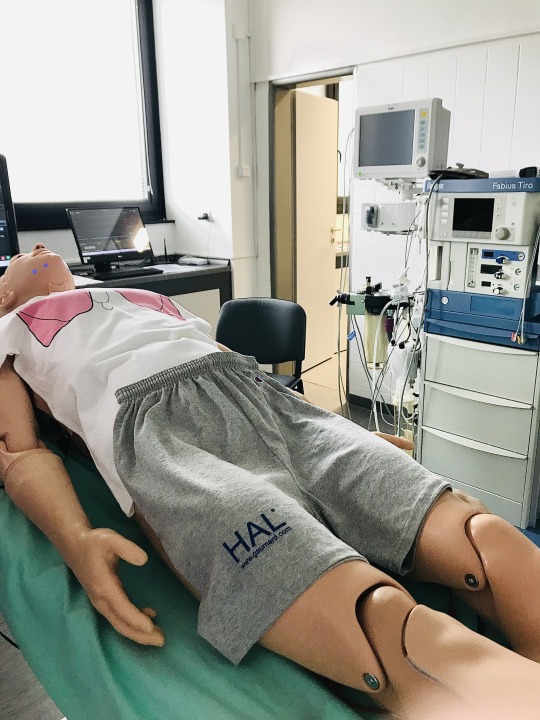
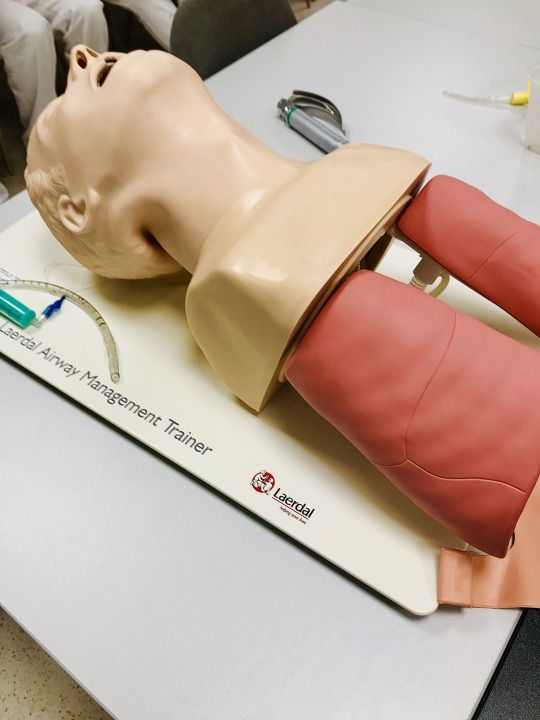
ICU & ED simulation training -challenging but great experience!💪
#tmedic#studyblr#medicine#medblr#medblr community#emergency medicine#intensive care unit#intensive medicine#my stuff#studyspread#med school#medical university#anesthesiology#medical training#year5#med#uniblr#cpr#resuscitation#clinical medicine#icu care#medical blog#study medicine#aspiring docblr
37 notes
·
View notes
Text
“Putting a patient on a ventilator is the easy part, the challenge is taking them out.”
20 notes
·
View notes
Text
living in my barbie dream house of physically affectionate dirge
#it’s most certainly not happening now#but later. in the future#for now they are too scared to act on the impulse#partially on the basis of like. would they hurt a friend in process of trying to be kind#on another note I’m obsessed w lae’zel like#yes girl continue to feel as if you can only find your purpose in life in a godlike being who only pretends to care about you!#I don’t think it’s a flaw there is so much of her sense of self and world view within her culture#it takes all the sense in the world for her to cling to that so intensely#it makes sense not takes sense#it’s so interesting next to dirge who has such a half baked sense of self#from what scattered memories + invented bits and bobs + the experiences on the road#side note: I love the succeeding at various checks like history ones where it talks about your studies#it’s the how did I know that kind of feeling#but dirge has gotten used to it and is sort of….piecing together bits of who they are by that#they can kinda piece together that they were taught history magic and medicine as well as bard magicks#beyond that they got nothing. but they sure will spin a story of who they are based on that#bc what is a bard if not a good storyteller? even in the service of self illusion#sorry im getting bg3 obssessed ANYWAY#oc: durge#owen plays bg3
4 notes
·
View notes
Text
The worst part about the ICU is that you get to a point where you're on a first-name basis with family.
Frederick was at bedside every day, sitting beside his wife. When he wasn't, they were on speakerphone, her work of breathing worse each day. We explained to the family that she was really really sick, and they understood that the prognosis was poor.
But when it came time to decide about intubation, they couldn't bring themselves to withdraw care... so we intubated, knowing there was no way that she would ever come off the vent.
It was after 10pm when the nurse came over to us.
"Room 7 won't make it through the night. Maybe you should call family."
My senior looked at me, and asked, "You wanna call the husband?"
"Frederick? No."
"It's important to learn how to have these conversations, you know," he said, somewhat gently.
"I know. And I have them plenty. But you asked me if I want to call him and tell him his wife is dying, and I don't. But I can, if you want me to."
He nodded and dialed the number from our 'Next of Kin' list. "Mr. Smith, I wanted to..."
Not even half an hour later, the monitor by my computer started beeping furiously. Her blood pressure, which had been dangerously low already, tanked. I ran to Room 7 as nurses from surrounding rooms crowded into the little space, code cart already in place.
She had no pulse. The ICU team really did have an intuition for this sort of thing.
We went through the motions of the code, not for a moment believing that we would get her back. But we did. A short-lived miracle... but maybe it would give Frederick just enough time to come back.
The second time her heart stopped, my senior asked me to let the family know that we had done everything we could. I stepped outside, the sounds of the active code behind me, and explained that there was nothing to be done.
"So this is it?" he asked matter-of-factly.
I nodded. "I'm very sorry, Mr. Smith." He thanked me as I walked back into the room just in time to hear the pronouncement.
"Time of death: 10:39 PM."
Gloves came off. Supplies were discarded. The code cart was wheeled unceremoniously out of the room. One of the nurses placed a fresh sheet over the patient, tucking it gently around her.
As I headed back to my workstation, a heart-wrenching sob pierced the hallway. Frederick - a stoic, quiet man who had spent countless hours with wife, ever so hopeful - was sobbing into his knuckles.
I felt the tears well into my own eyes, swallowed hard, and looked up to see the surgery resident coming towards me, no doubt seeing my watery eyes but making no comment.
"Are you taking care of...?"
And the rest of the night went on.
#medicine#residency#personal#intern year#residency chronicles#nursing#doctor#med life#med student#doctor patient stories#icu#intensive care#nurse
22 notes
·
View notes
Photo

The Death Dilemma: Are Hospitals Overtreating Patients Nearing the End?
An ER physician on the heavy costs of keeping patients alive when death is inevitable
A code blue is usually associated with acts of medical heroism. But when it is applied to a dying patient in the ICU, it is perhaps the most gut-wrenching betrayal of the Hippocratic oath to do no harm. The pain of chest compressions, the chaos of orders being yelled out, the frenzy of needles and tubes being shoved in your body as you are fading away—doctors know how distressing this must be, and it can be just too much for many of us to handle. ICU teams have come to find workarounds to ethically fraught situations where doing “everything” to a patient who fears death would do absolutely no good and would most certainly deliver harm.
Read more at thewalrus.ca.
Illustration by Nicole Rifkin (reformforest.com)
#Health#Medicine#Death#ICU#Emergency medicine#Intensive care#Death Interrupted#Illustration#November 2022#Blair Bigham#Nicole Rifkin
3 notes
·
View notes
Text
Hi guys, what's your local policy for fluid resuscitation in patients with sepsis (not septic shock) with oliguric CKD or reduced ejection fraction? Some literature supports the aggressive use of crystalloid in patients with septic shock even if they're normally at risk of volume overload, but I wonder if that can be extended to systemically ill patients with a clear source of infection without overt hypotension.
#sepsis#septic shock#fluid resuscitation#iv fluids#critical care#emergency medicine#a&e#intensive care#infectious disease#id
3 notes
·
View notes
Text
My campaign is verified and added to the Gaza Donations page with number 192.
Thank you for documenting my campaign from the following accounts:
@sar-soor @heba-20 @el-shab-hussein @90-ghost @soon-palestine@ibtisams @marnota @riding-with-the-wild-hunt @i-am-aprl @northgazaupdates @fallahifag @fairuzfan
I love you all 🙏🙏♥️🌹
I am Mohammed Almanasra, 32 years old, married, and a father of three children: Abdulrahman, 6 years old, Sarah, 4 years old, and Lina, 3 years old.

My story began with the loss of my parents and four of my sisters, who were bombed and lost their lives along with their children after the events of October 7 and the severe war on Gaza. Now, I am facing a severe injury to my leg, which is at risk of amputation if I do not receive the necessary treatment. My wife, children, and I are displaced, without parents or siblings, and my wife is also suffering from uterine cancer.

Recently, I moved to the south of the Gaza Strip, fearing for the lives of my children. We left behind our memories and our new home, for which we had not finished paying the installments, in addition to losing my job. Currently, I live in a tent that does not protect me from the heat of summer or the cold of winter, and without the minimum necessary livinng basics including water, food medical care, clothe and even bedding .

I suffer from a chronic asthma and severe attacks from tightness and an extreme allergy in the ear and I need medicine that are not available, or very expensive .
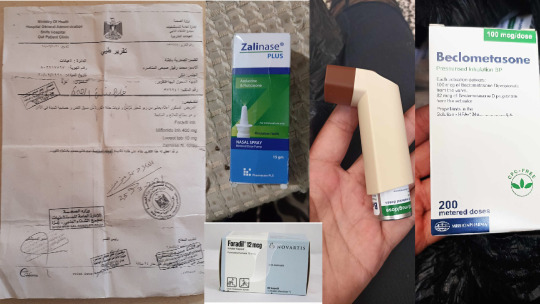

Under these difficult circumstances, after five attempts at displacement and narrowly escaping death from the bombing, I am trying with all my might to protect my family, the most precious thing I have.
My dreams were shattered, and my house was destroyed, and I found myself living in a tent no larger than 4 square metres. My work turned from a tailor to a street vendor in order to barely buy a few crumbs of bread to feed my children.
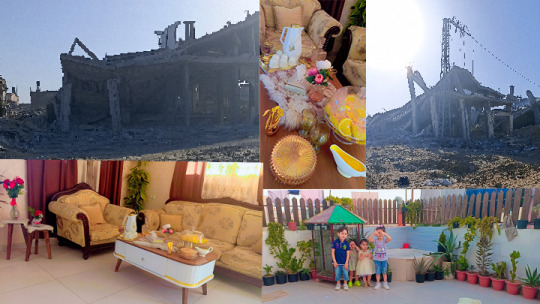
Look at what happened to my children because of the intense heat and the insects that thrive in the summer season. Every day, I take them to the hospital to treat them due to poisonous insect bites. I implore every kind-hearted soul to help me protect my children.
My son, Abdul Rahman, has a deep passion for playing football and is a devoted fan of Real Madrid. He always dreamed of playing football at his school, but the war prevented this dream from coming true.
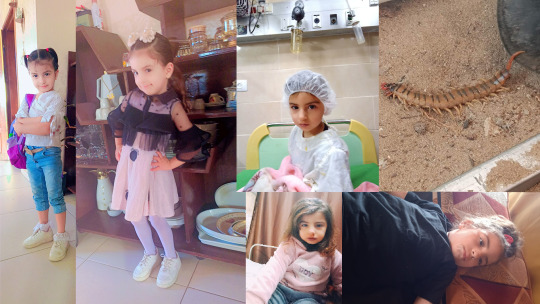
Where are you, Real Madrid fans ?
Help Abdul Rahman achieve his dream.

Every donation will make an enormous difference in helping me save my family.
I feel very sad and embarrassed to ask for help, but I have no other options left. I know that this request is difficult, but I also know that there is still humanity and living consciences and I believe in miracles.
Your support during this extremely difficult time will give us hope in the midst of devastation and despair.
If you have any inquiries or questions, feel free to ask me, please!
To everyone with a compassionate heart,
To all who understand the essence of humanity,
This is a message from my innocent children, who trust that their words will reach everyone who truly understands the meaning of childhood.
We cry out to you, asking you to feel our sorrow and pain, and to extend a helping hand to us in this time when we are in desperate need of your mercy and compassion.
My name is being repeatedly added to many public and private donation campaigns. Please, be a support for me in this difficult situation.
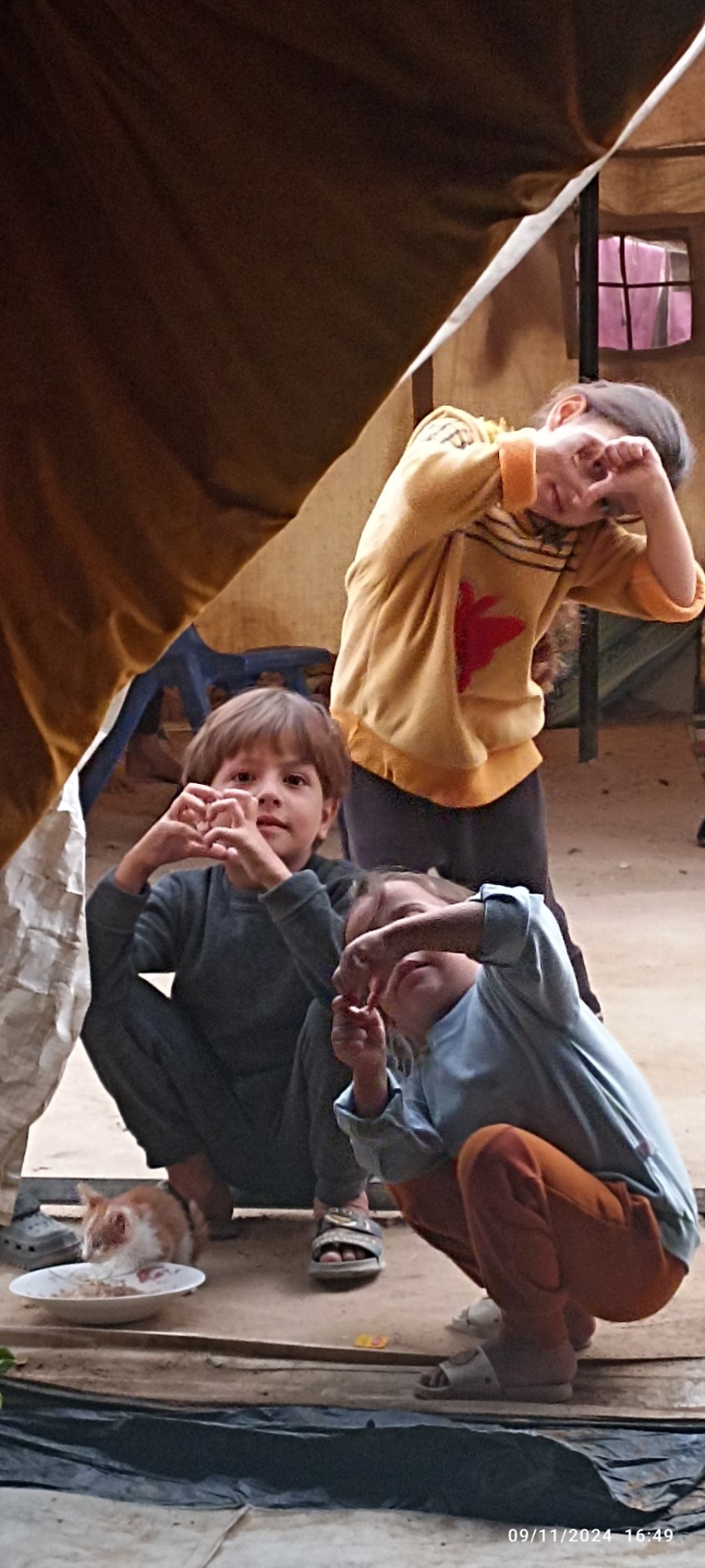
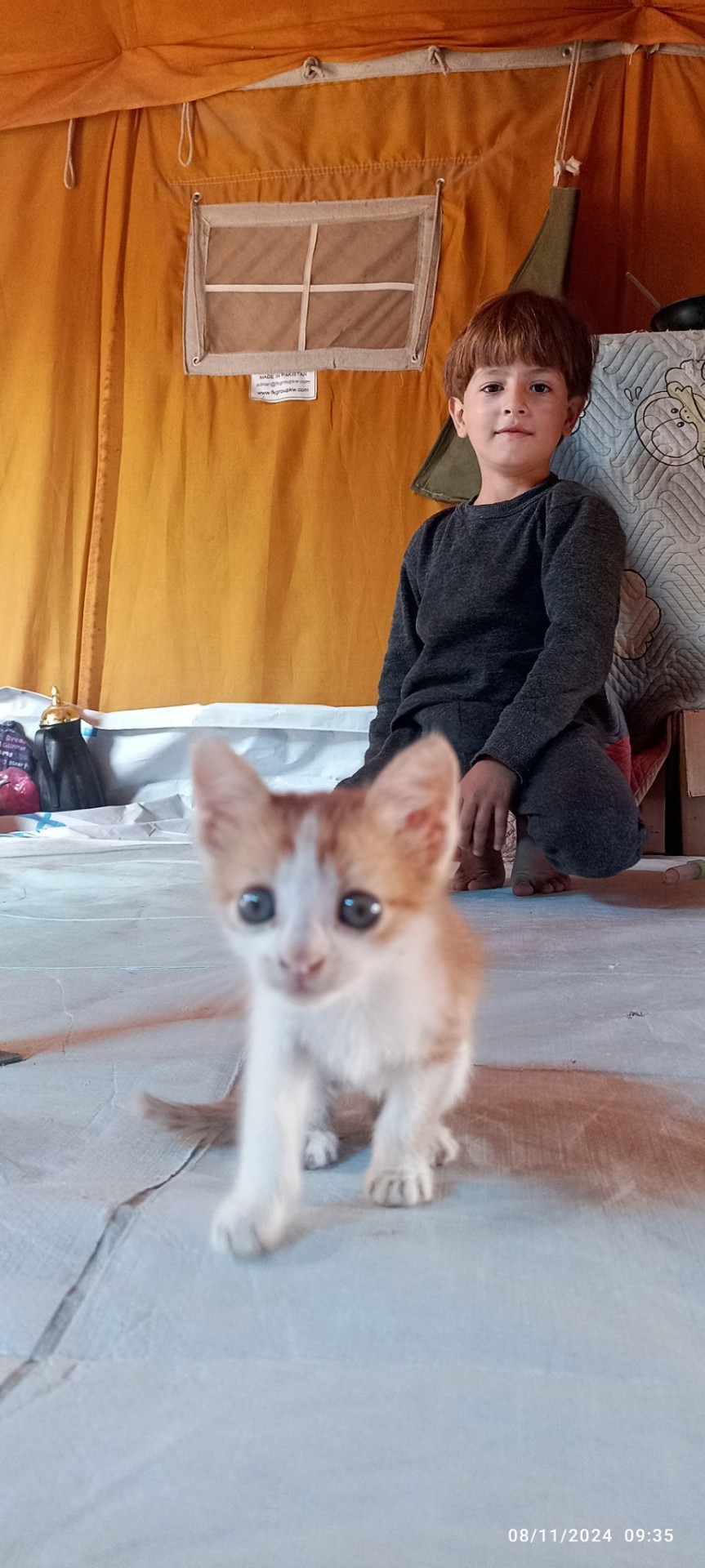
https://docs.google.com/spreadsheets/u/0/d/1yYkNp5U3ANwILl2MknJi9G7ArY4uVTEEQ1CVfzR8Ioo/htmlview
Sincere greetings & thanks
Mohammed & the family
#gofundme#palestinian genocide#free gaza#gaza strip#gaza#i stand with palestine 🇵🇸#free palestine 🇵🇸#from the river to the sea palestine will be free#palestine#gaza under attack#aid for gaza#palestine aid#support palestine#my posts#paypal#palestine news#please#war on gaza#🥭#follow 👑 share ❤️ enjoy 🍑#🇵🇸#save 🍉#palestine 🍉#much love 🫶#📍 pinned post.#sorry 😔#gaza solidarity encampment#gaza gofundme#palestine gfm#free palestine
27K notes
·
View notes
Text
Vatted by association
Click here
Very important please do not ignore🚨🚨
Save the life of my husband and children from death 🥹💔🇵🇸
Hello friends, despite the difficult circumstances we are living in, from famine and the lack of food and drink and facing death at every moment, my husband and I were exposed to direct and close bombing by Israeli warplanes😭, and as a result, my husband and I were seriously injured. My husband entered surgery and spent several days in intensive care. As a result of the injury, he lost his left eye and 70 centimeters of intestine were removed.💔😭
His condition is critical and he is now staying in the hospital and needs treatment and healthy food that is not available 🥹💔
In addition, my tent was damaged by the missile bombing and became unlivable 🥹💔
So please, I need your support and help 😭 Try to help me with any donation to provide shelter for my children and treatment for my husband.
Please, my life and the lives of my children and husband are in danger 🥹💔💔
Any donation you make will help me provide a tent or at least provide medicine and food for my husband.




16K notes
·
View notes
Text
Know five surprising facts about cardiac care services
Globally, cardiac disease is one of the greatest threats, leading to death. Cardiac care services become essential for the management, treatment and prevention. While many are familiar with heart health basics, there are several other facts that can be critical for saving lives.
#Emergency Medicine Doctor in Gondia#Critical Care at Gowri Gopal Hospital in Gondia#Intensive Care Unit in gondia#Critical Care Unit in Gondia#Department of Critical Care and emergency#Hospital for Emergency care#Best Critical care Hospital in Gondia
0 notes
Text
Balaji Hospital | Neurosurgery for Brain & Spinal Conditions
Balaji Hospital's Neurosurgeon showcases a team providing advanced surgical solutions for brain, spine & nervous system conditions using techniques & technology

#Neurophysician#Neurosurgeon#Complete cancer care#Ulcerative colitis#Radiologist#Vascular radiology#Periodical medical examinations#First aid training programs#Intensive Care Medicine#Health awareness programs#Guj.Factory rules#Work of H.I.R.A#Vadodara
0 notes
Text
Fellowship in Critical Care in India and Online Fellowship in Intensive Care Medicine
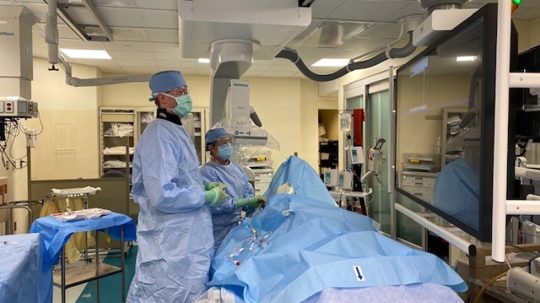
In the dynamic landscape of healthcare, the demand for specialized medical professionals, particularly in critical care, is ever-increasing. Recognizing this need, fellowship programs in critical care have emerged as invaluable avenues for healthcare practitioners seeking to enhance their skills and knowledge in managing critically ill patients. In India, as well as globally, these programs serve as pillars of expertise, fostering the development of competent intensivists capable of providing high-quality care in intensive care units (ICUs) across diverse healthcare settings.
Understanding Fellowship in Critical Care in India
Fellowship programs in critical care in India are structured postgraduate courses designed to equip medical graduates with comprehensive skills and expertise in managing critically ill patients. These programs typically span one to two years, during which fellows undergo rigorous training encompassing various aspects of critical care medicine. The curriculum often includes didactic lectures, clinical rotations in ICUs, hands-on procedural training, and research opportunities, all under the guidance of experienced intensivists.
The objectives of fellowship programs in critical care in India are multifaceted. Firstly, they aim to cultivate a deep understanding of critical illness pathophysiology, including respiratory, cardiovascular, neurological, and renal dysfunctions, among others. Secondly, fellows learn advanced life support techniques, invasive procedures such as intubation and central line placements, and the management of complex medical emergencies. Additionally, emphasis is placed on interdisciplinary teamwork, communication skills, ethical considerations, and end-of-life care in critical care settings.
The Rise of Online Fellowship in Intensive Care Medicine
With the advent of technology and the global connectivity afforded by the internet, online fellowship programs in intensive care medicine have gained traction in recent years. These programs offer a flexible and accessible alternative to traditional, in-person fellowships, particularly advantageous for healthcare professionals balancing clinical responsibilities with academic pursuits or residing in geographically remote areas.
Online fellowship in intensive care medicine leverages various digital platforms and educational resources to deliver a comprehensive curriculum comparable to its offline counterparts. Through live webinars, virtual case discussions, interactive modules, and simulation-based training, participants gain theoretical knowledge and practical skills essential for managing critically ill patients. Moreover, online forums and discussion boards facilitate peer-to-peer learning and collaboration among participants from diverse geographical locations.
Bridging the Gap: Offline and Online Fellowship Integration
While traditional fellowship programs in critical care provide invaluable hands-on experience and direct patient care opportunities, online fellowships offer flexibility and accessibility, catering to a broader audience of healthcare professionals. Recognizing the complementary nature of these approaches, some institutions have begun integrating offline and online components into hybrid fellowship models.
In hybrid fellowship programs, participants benefit from a blend of in-person clinical rotations in ICUs, procedural training, and face-to-face interactions with mentors, augmented by online lectures, virtual simulations, and remote mentorship. This hybrid approach combines the strengths of both offline and online modalities, fostering a well-rounded learning experience that transcends geographical boundaries and enhances accessibility without compromising on quality.
The Impact and Future of Fellowship in Critical Care
The significance of online fellowship programs in critical care, both in India and globally, cannot be overstated. As the complexity of critical illness continues to evolve, the role of intensivists becomes increasingly indispensable in delivering optimal patient outcomes. Fellowship-trained intensivists possess the expertise, confidence, and interdisciplinary collaboration skills necessary to navigate the intricacies of modern ICUs and address the diverse needs of critically ill patients.
Looking ahead, the future of fellowship in critical care is poised for innovation and expansion. Advances in medical education, technology, and healthcare delivery will continue to shape the landscape of intensive care medicine education, offering new avenues for learning, collaboration, and professional development. Whether through traditional offline programs, online fellowships, or hybrid models, the pursuit of excellence in critical care remains paramount, driven by a shared commitment to advancing patient care and improving clinical outcomes.
0 notes
Text
R.I.P., My Love (part i) // Tory Dent
Let us be apart then like the panoptical chambers in IC patient X and patient Y, our names magic markered hurriedly on cardboard and taped pell-mell to the sliding glass doors, "Mary", "Donald", "Tory"; an indication that our presence there would prove beyond temporary, like snow flurry. Our health might be regained if aggressive medical action were taken, or despite these best efforts, lost like missing children in the brambles of poor fortune. The suffering of another's I can only envision through the mimesis of my own, the alarming monitor next door in lieu of a heartbeat signifying cardiac arrest, prompts a scurry of interns and nurses, their urgent footsteps to which I listen, inert and prostrate, as if subject to the ground tremors of a herd of buffalo or horses, just a blur in the parched and post-nuclear distance. I listen, perhaps the way the wounded will listen to the continuing war, so different sounding than before, the assault of noise now deflected against consciousness rather than serving as motivation for patriotism and targets. Like fistfuls of dirt loaded with pebbles and rocks thrown at my front door, I knew that the footsteps would soon be running to me also. The blood pressure cuff swaddled around my arm pumped in its diastolic state independently like an iced organ ready for transplant as I witnessed with one circular rove of my eyes my body now dissected into television sets, like one of those asymmetrical structures that serves as a model for a molecular unity in elementary science classes. And the plastic bags of IV fluids that hung above me, a Miró-like mobile or iconic toy for an infant's amusement, measured the passing of time by virtue of their depletion. Sometimes I could count almost five and then seven swinging vaguely above me at 4 am. I remember the first, hand-held high above me when I arrived via ambulance at the ER, the gurney accelerating as a voice exclaims on the color of my hands "they're blue!". Another voice (deeper) virtually yells out into the chaos that she can't get a pulse. Several pairs of scissors begin simultaneously to cut off my clothes, their shears working their way upward like army ants from pant cuff and shirt-sleeve, a formulaic move for the ER staff which, despite its routine, still retains a sense of impromptu in the hurriedness of the cutting both deft and crude, in the sound of their increased breathing, of their efforts intensified by my blood pressure dropping, the numbers shouted out as if into night fog and ocean. It's not a lack of professionalism but the wager of emotional investment that I feel. One attendant, losing her aplomb for a moment, can't contain herself from remarking (as if I'm already post-mortem) on what a great bra I have; "Stretch lace demi-cup, Victoria's Secret," I respond politely in my head.
#poetry#Tory Dent#American poetry#HIV/AIDS#anti-war poems#hospitals#illness#Victoria's Secret#death#dying#intensive care#suffering#medicine#long-term illness#alienation#living with HIV#grief#love
0 notes
Text
Extracorporeal Membrane Oxygenation Machine | Exploring Opportunities and Challenges
The global extracorporeal membrane oxygenation machine market size is anticipated to reach to reach USD 445.7 million by 2030, expanding at a CAGR of 5.5% from 2024 to 2030, based on a new report by Grand View Research, Inc. This growth can be attributed to the rising prevalence of cardiopulmonary and respiratory diseases, increasing adoption of ECMO machines in hospitals, and technological advancements in ECMO machines. The market expansion is also driven by the need for advanced life support technologies like ECMO machines, which are becoming increasingly necessary in treating patients with severe or life-threatening cardiac or pulmonary conditions.
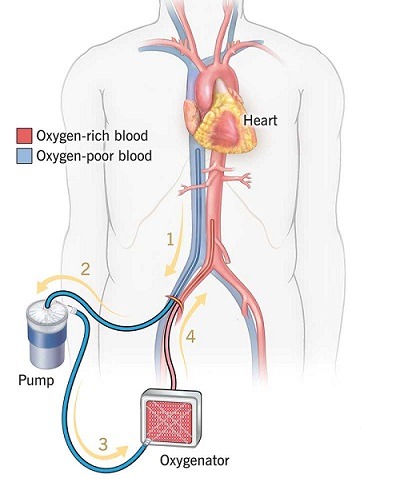
Extracorporeal Membrane Oxygenation Machine Market Report Highlights
In 2023, the oxygenators segment accounted for the largest market share. This can be attributed due to prevalence of diseases like coronary heart disease and chronic obstructive pulmonary disease (COPD) continues to rise, the demand for advanced life support technologies like ECMO machines increases, driving the growth of the oxygenators segment.
The veno-arterial segment dominated the modality segment of ECMO machine market in 2023. This growth can be attributed due to high usage of veno-arterial ECMO in treating patients with cardiac arrest, where it assists with algorithm life support strategies to restore blood circulation. Additionally, the increasing incidence of chronic obstructive pulmonary disease (COPD) is also a key driver of this market segment.
The respiratory segment dominated the application segment in 2023 due to the high prevalence of respiratory diseases, such as Chronic Obstructive Pulmonary Disease (COPD) and acute respiratory distress syndrome (ARDS), which are leading causes of death worldwide, necessitate advanced life support technologies like ECMO machines.
The adult patient segment dominated the patient type segment in 2023 due to the prevalent incidence of heart and lung-related issues necessitating life-saving interventions.
The North American region held the largest share of the market in 2023 due to key industry players, consistent product launches, government backing for quality healthcare, advanced healthcare infrastructure, and favorable reimbursement policies.
Market players adopt several strategic initiatives to increase the product reach and improve availability in diverse geographic areas.
For More Details or Sample Copy please visit link @: Extracorporeal Membrane Oxygenation Machine Market Report
The rising prevalence of cardiovascular and respiratory diseases. Diseases such as coronary heart disease, cerebrovascular disease, rheumatic and congenital heart diseases, respiratory diseases like acute respiratory distress syndrome (ARDS), and chronic obstructive pulmonary diseases are leading causes of death worldwide. For instance, according to the World Heart Federation, approximately 18.6 million people die annually from cardiovascular diseases. Additionally, about 190,000 Americans are diagnosed with ARDS annually in the U.S. Such an increasing prevalence of cardiovascular and respiratory diseases has boosted the demand for ECMO machines, driving the market growth.
In addition, the increasing rate of technical improvement is increasing the usage of products. It is easier to transfer critically ill patients now as machine parts like hollow pumps and oxygenators are smaller. Moreover, introducing technologically advanced components, such as improved rotary pumps, dual-lumen cannulas, innovative oxygenators, and new cannulation approaches, is anticipated to ease the use of ECMO machines. For instance, in 2022, Inspira Technologies OXY B.H.N. Ltd. recently introduced the "Liby" System, an advanced life support system used to treat patients with life-threatening heart and lung failure. Similar advancements and the introduction of new products are expected to drive market growth in the coming years.
#extracorporeal membrane oxygenation#ECMO#life support technology#critical care#cardiopulmonary support#medical devices#intensive care#respiratory failure#heart-lung bypass#market analysis#healthcare technology#patient care#emergency medicine#global health#cardiac surgery#pulmonology#resuscitation#innovation#market trends#healthcare industry
0 notes